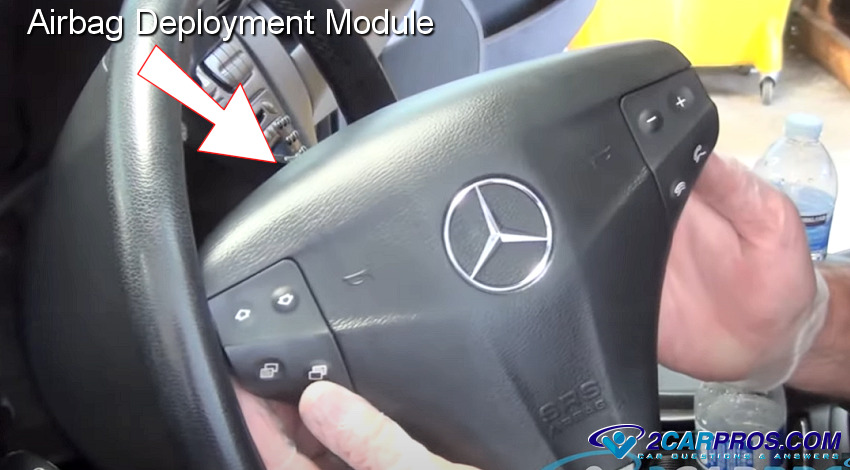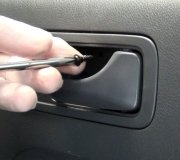I agree with Don.
I have a 2001 Winstar with a 3.8L V-6 engine. It had sat unused for about 3 to 4 weeks with the front of the vehicle up close to the house. When I went to crank the engine over to start it, it turned maybe one revolution and coughed then stopped like a misfire. When I tried to turn it over again the engine would not rotate and the starter stalled and acted like a dead battery. The starter actually started clicking so I assumed the battery was low on charge so put it on the charger and charged it over night. I check the battery in the morning with a battery load tester and it showed good results so I knew the battery was fine. I tried to turn the engine over again and still the starter stalled and engine would not spin. It acted like engine was hydro-locked.
I crawled underneath the vehicle and put a ratchet on the dampener pulley bolt and tried to turn the engine over by hand. It would not budge in the forward direction (clockwise). I however was able to move it counterclockwise so I knew the engine was not seized. When I turned it clockwise again it rotated until it got back into the same position then stopped. It was not a hard stop like metal on metal but it just stopped. So I assumed it was hydro-locking with the cylinder that is staged for compression. I assumed it was a blown head gasket with anti-freeze getting into the cylinder.
With the Winstar you have to take the wiper tray completely off the vehicle to access the rear of the engine and get to the rear spark plugs. Don, I did not notice any drain holes or really any collection points in the tray but then again at the time I was not looking for anything like that.
When pulling the spark plugs I found the middle cylinder on the back side of the engine had about a cup of water in it. I rotated the engine by hand with the dampener pulley bolt and squeezed the water out. I collected the water and it was crystal clear and no hint of anti-freeze. I know a lot of websites say blown head gasket but I am disagreeing in this case for there is no hint of anti-freeze via smell and no sign of the overflow tank dropping in anti-freeze. With the amount of water that came out of cylinder the overflow tank should have been half empty.
I blew the engine out by rotating the engine with starter and all the plugs out then put everything together and the engine fired up and ran perfect. A ton of water came out of the exhaust pipe maybe few cups of water. The tail pipe blew out steamed for the first 30 seconds the engine was running then quit blowing steam. The engine ran smooth with no unusual sounds or hesitations. I idled the engine for an hour and the tail pipe continued to drip water. So I took it for a 10 mile drive at 60 mph. Tail pipe finally dried out and quit dripping. Up to that point I kept thinking maybe I am wrong. Maybe there is a blown head gasket but nothing seemed to really support that except for the amount of moisture. For two weeks I kept checking the engine by starting it up to see if it would hydro-lock. No issues. No loss of anti-freeze in the over flow jug. Took the vehicle on a 150 mile journey. No problems, no loss in anti-freeze.
Then it rained for two days prior to today. I went to start the vehicle today and again engine turned about one revolution and the starter stalled and could not turn the engine over any further. I put the ratchet on the crank shaft dampener pulley bolt and this time I could turn the engine over. It did not lock up like last time. So I rotated the engine by hand probably 90 degrees then tried the starter again and the starter was able to turn the engine and it fired up like there was no issue. The exhausted steamed again for about 30 seconds then the steam quit and the tail pipe just dripped a ton of water. I ran the vehicle up to a gas station that is about 5 miles away. Filed up. Restarted the engine at the station and drove home. No issues and the tail pipe dried out just like last time. Note, the water coming out of the tail pipe before it dried out was again clear. There was again no hint of anti-freeze smell in the exhaust or with the water. The over flow jug still has not shown any loss of anti-freeze.
I have to believe this is rain water finding its way into the engine cylinders either by the intake or exhaust manifolds. In the 14 years we have had this vehicle there never once was this problem in the 150K miles. Now we have seen it twice in one month. It has me baffled how it is getting in there. I have to assume it is getting into the intake plenum somehow. Only common element is we never have parked it with its front end close to the house until about a month and a half ago, usually it just sat in the driveway. The only thing my wife and I can think of is that maybe there is strange air turbulence when it is against the house and water may be finding ways through the intake system because of this. Today when we moved the vehicle there was a lot of moisture still on the pavement of the drive by the house under the engine even though the rest of the drive had evaporated and was dry, even under most of the vehicle except under the engine area.
Hopefully this will help the experts to think what else could be causing the water to get into the cylinders outside of it being a head gasket issue.
Wednesday, May 6th, 2015 AT 7:47 PM


